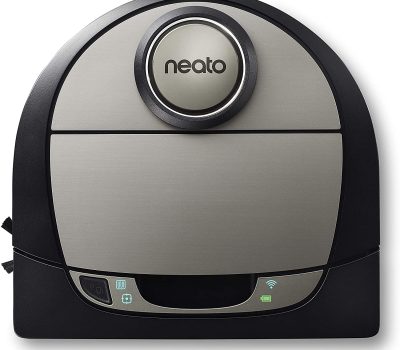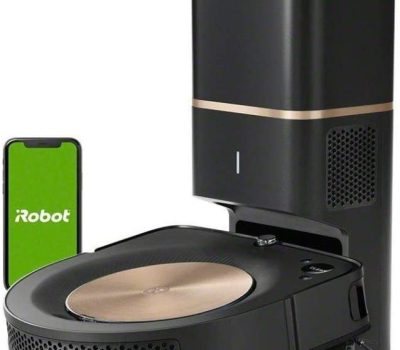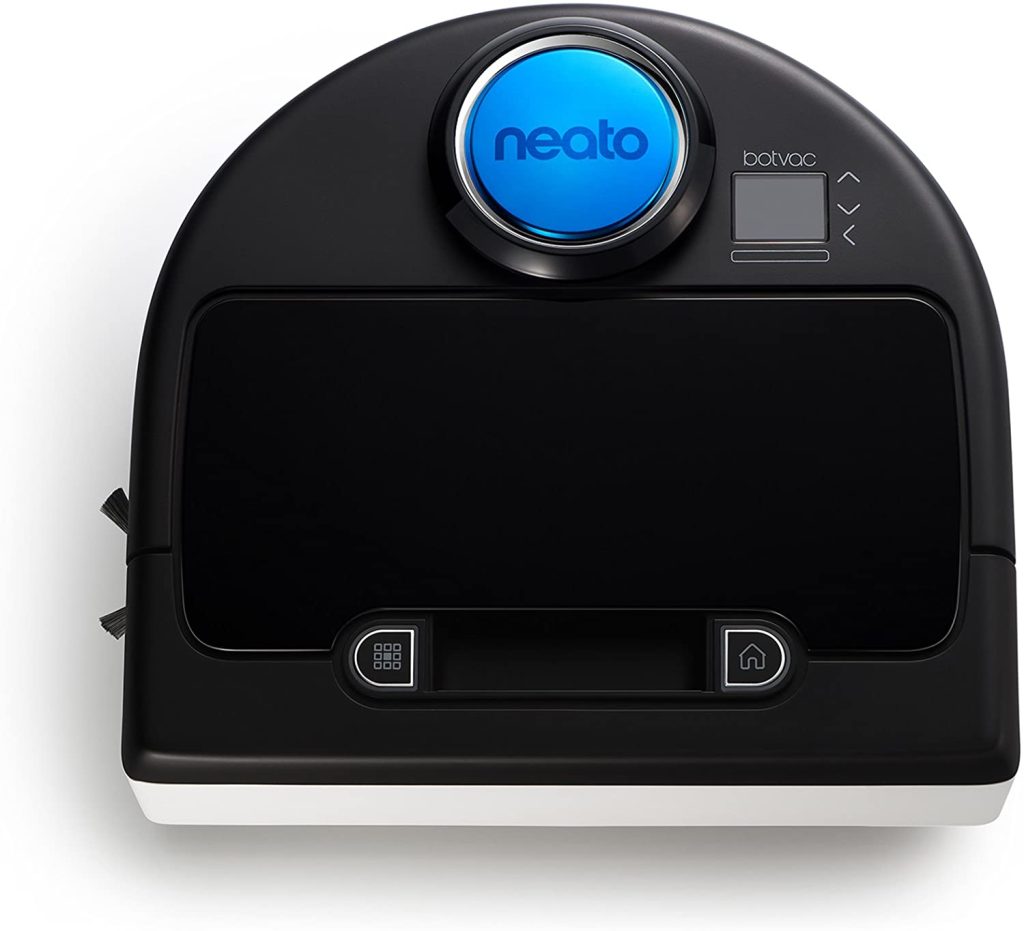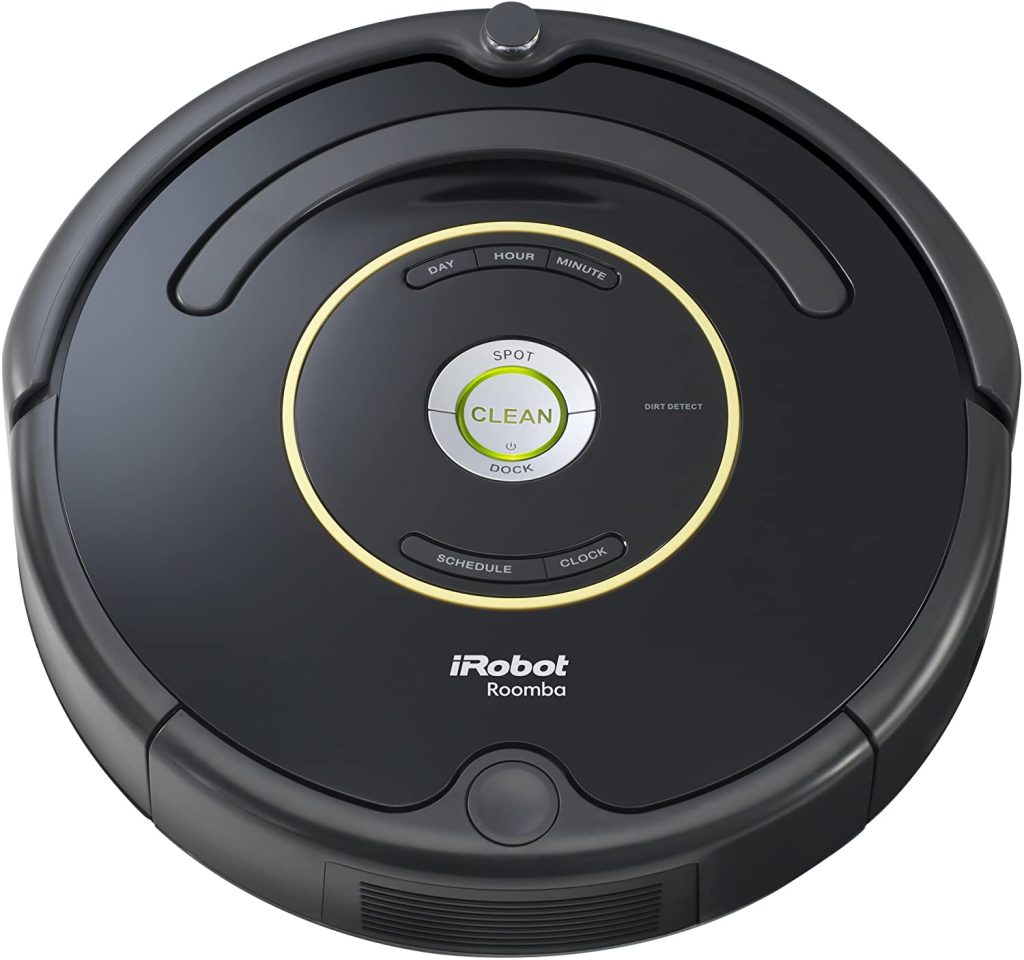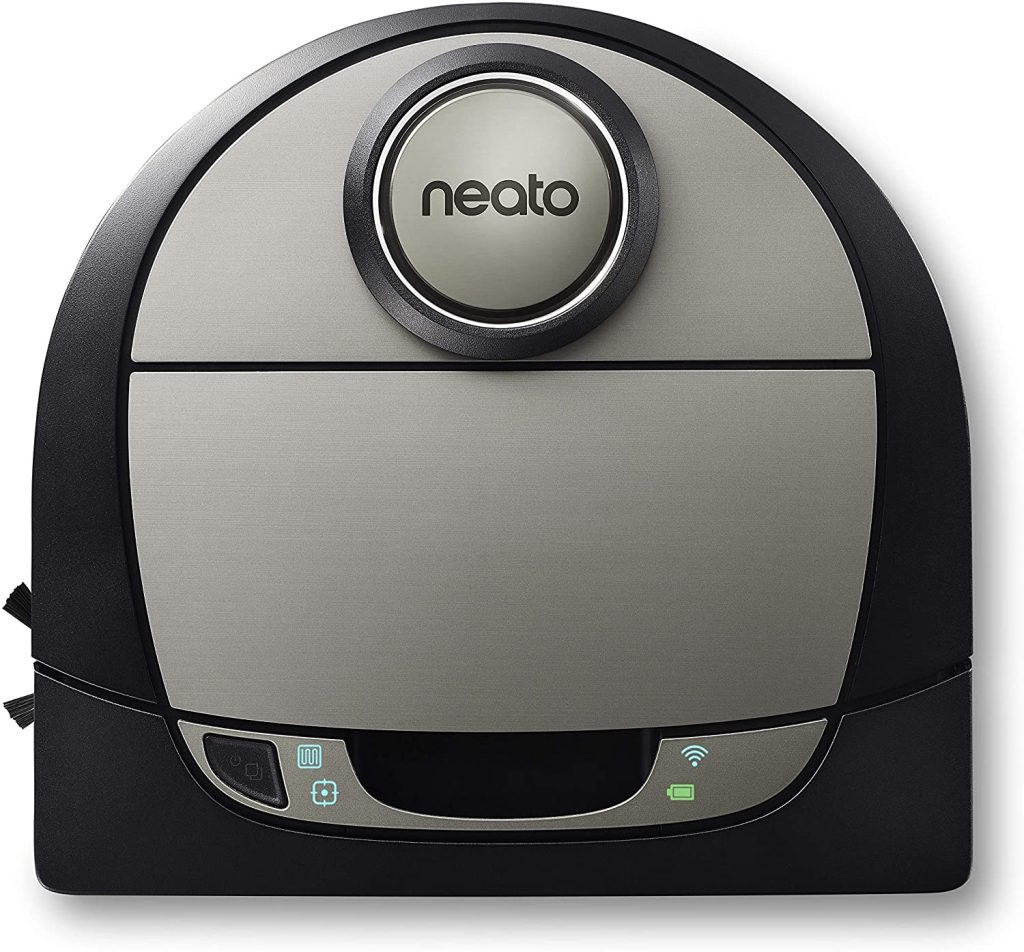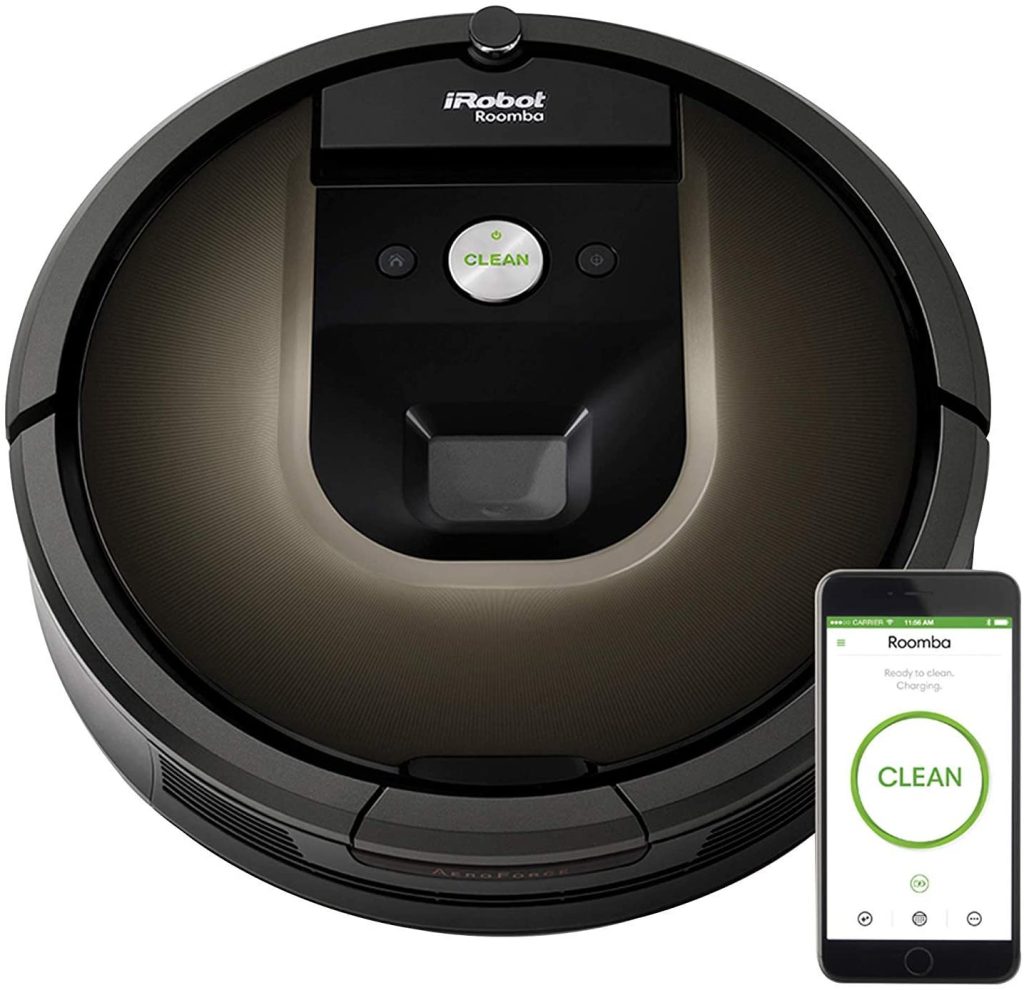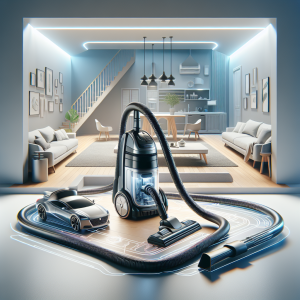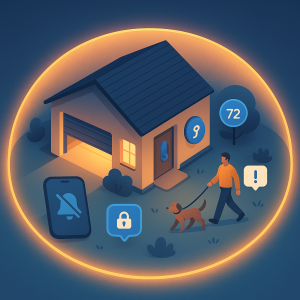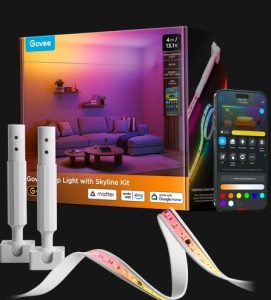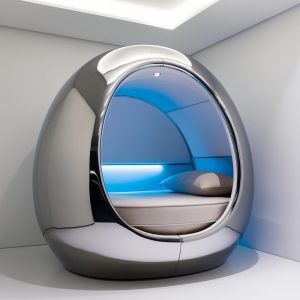This is our head-to-head review of the Roomba by iRobot and the BotVac by Neato.
Both have a lot to offer when cleaning your home, but we can provide you with the definitive answer. We recommend the Neato BotVac as the best robotic cleaner because of its functional design, cleaning power, and budget-friendly price.
The word “Roomba” is often associated with robotic vacuums the way “Kleenex” is synonymous with facial tissue. If this were a simple popularity contest, the Roomba would be a clear winner in the world of robot vacuums. However, the Neato robotic vacuum holds its own.
Keep on reading to learn more about these two robotic cleaner brands.
Roomba vs Neato 2021
Roomba and Neato are on top in the world of robotic vacuums. Both brands boast some excellent features that make it a worthy competitor in the race for dominion over your dirty floor. Before we dive into comparing the two robotic cleaners, let’s get a quick overview of these two companies.
iRobot
iRobot was founded in 1990 by roboticists from MIT. The company aims to create practical robotic products to help people around the home. Initially, the company built defense robots used for explosive and hazardous material removal. These robots were used to aid in military operations in Iraq and Afghanistan and were even involved in NASA missions.
In 2002, iRobot appeared on the cleaning product scene with the first few Roomba models. These round, frisbee-shaped machines have become a household name when we speak of robotic cleaners. IRobot’s products also include robotic floor scrubbers, floor moppers, pool cleaning robots, and even a gutter-cleaning robot.
Neato Robotics
Neato Robotics began producing robotic cleaners in 2010. The company’s purpose is to improve people’s everyday lives with robotics. The company started at Stanford’s Entrepreneur’s Challenge, where the founders decided to create robots that could do household cleaning tasks as effectively as humans.
Neato products boast the “D-shape advantage,” which enables the robotic cleaner to reach more effectively into corners and alongside walls. According to internal labs, the Neato achieves up to 70 percent floor coverage than robotic cleaners with a round design.
Roomba vs. Neato: Pros and Cons
Both the Roomba and the Neato BotVac have a lot to offer regarding automated home cleaning. Before we compare these two products in detail, let’s go over the pros and cons.
Roomba (Read Our Full Roomba Review)
Pros:
- The circular shape makes for easier and faster turns
- Quieter machine
- Four hours of battery life on a single charge
- Virtual Wall feature
Cons:
- Circular shape keeps it from cleaning close to walls and in hard-to-reach corners
- More sporadic cleaning pattern
- Lackluster suction
Neato Pros and Cons
Pros:
- The D-shaped design allows it to clean into the corners and up against the walls
- Back-and-forth cleaning pattern
- Larger brush
- Powerful suction
- Less expensive
Cons:
- Can’t turn as fast as the Roomba
- Boundary marker technology involves magnetized strips on your floor
- Almost as loud as a traditional vacuum cleaner
Comparison: iRobot Roomba vs. Neato
We all expect a certain quality of performance from our robotic cleaners. Roomba and Neato both keep your house clean with the help of laser navigation and dust detection, but depending on which additional features you prefer, one will work better for you than another. Let’s go over some of the features of these two robotic cleaners and see which one pulls ahead.
Design Functionality
When it comes to a vacuum that automatically cleans your home, you want a machine designed to do its job thoroughly and discreetly without your help. Ideally, you’ll forget your vacuum is there. That’s the whole point of the robot vacuum.
Shape
Both Roomba and Neato are designed to vacuum automatically, but their designs differ, which affects the machines’ functionality.
Roomba is a circular shape, and although this means it can maneuver quickly, it has trouble reaching corners and other nooks and crannies. You may have to sweep or vacuum those hard-to-reach corners yourself. This might defeat the purpose of a robot vacuum for some people.
The Neato’s shape is different from the Roomba’s. It has a round back but a square front, similar to that of a regular vacuum. The Neato vacuum as a whole is shaped like the letter D. Its straight edge works perfectly for getting close to walls and into corners.
One advantage of the Roomba’s circular design is increased mobility. The Roomba has two rotating side wheels with 360-degree turn capability. These wheels enable the Roomba to switch directions quickly. By contrast, the Neato has to turn its straight-edged front to face the direction it’s going.
Height
Another feature to consider is the height of the machine to ensure your robot can clean all those hard-to-reach places. The Roomba is three inches tall and can fit under most furniture. Now, the Neato is only one inch taller, but it might not be able to fit under your couch or cabinet. As such, the Neato is more likely to get stuck under furniture.
The ability to clean corners wins this category for the Neato vacuum. Just know that the areas under your furniture won’t be as spotless as the corners of the rooms.
Winner for Design Functionality: Neato
Even though the Roomba’s height makes it more capable of cleaning under furniture, the Neato’s ability to vacuum close to walls and corners outweighs it. There’s no need to revisit the edges and corners of rooms with a broom after Neato does its job.
Volume
Let’s talk about noise. We’ve all used a vacuum cleaner before and know that it makes a lot of noise. If you want a robot vacuum that doesn’t startle you every time it powers up, you’ll want to choose a product that operates at a lower volume.
Neato’s BotVac is almost as loud as a traditional vacuum. You’ll notice when it starts cleaning up around your home. The Neato is a highly effective vacuum, but it is far from discreet.
The Roomba is a lot quieter than the Neato, but there are a few related drawbacks that you should be aware of. One of the reasons for the Roomba’s quieter operation is that the suction is less powerful. This means that the Roomba won’t completely clean filthy spots in just one pass. It will move over it several times, kind of like you do when using a handheld vacuum.
Another effect of decreased suction is that Roomba takes longer to clean than the Neato. If you’re okay with sacrificing cleaning speed for a more quiet and discreet vacuum, the Roomba should work for you.
Winner for Volume: Roomba
The Neato’s noisiness is a clear mark against it. The Roomba is the clear winner here, thanks to its lower operating volume.
Effective Cleaning
When you buy a vacuum, you want it to be able to pick up dust and debris. Both the Roomba and the Neato BotVac do the job of a traditional vacuum, but the quality and effectiveness differ depending on which machine you purchase.
Suction
As we said before, Neato has better suction than the Roomba. If you don’t mind a louder vacuum, the Neato is the better vacuum for effective suction. With the Persistent Passing feature, the Roomba will pass over dirtier floor sections several times to clean up all the debris. This feature makes up for having less effective suction.
Brushes
Neato has a rotating silicone brush that thoroughly picks up debris and pet hair. It requires more cleaning than the Roomba, but it has more powerful suction and cleans an area in fewer passes than the Roomba. If you don’t mind cleaning the brush more often, the Neato has you covered when it comes to an effective scrub.
The Neato’s brush is also more extensive than the Roomba’s, thanks to the straight edge of the machine. Roomba’s brush is smaller because it has to fit between the wheels on the bottom of the disc.
Carpets
We’ve found that Roombas are better on carpets if you buy a model with rubber rollers. If a rug is too thick, the Neato Botvac will struggle to move across it.
Because of their “cliff-detection” feature, both the Roomba and the Neato avoid black carpets, mistaking them for the top of a staircase or some other ledge. This feature could be a problem depending on your house’s design.
Winner for Effective Cleaning: Neato
Roomba may have the high ground when it comes to vacuuming carpets, but the Neato holds its own in brush size and suction power. The Neato’s larger brush covers more area at a time, and the superior suction power collects dirt and debris faster and more thoroughly than the Roomba.
Charging and Battery Life
Neato and Roomba both come with a feature that helps them locate their charging dock when they need to charge their batteries. The results of charging are a lot different, though. When fully charged, the Neato has battery life for a little over an hour. The Roomba, on the other hand, has a battery life of up to 4 hours on a single charge.
The Neato has two power settings, high and low, and comes with a higher-powered motor than the Roomba. The Roomba’s engine has only one power setting.
Winner for Charging and Battery Life: Roomba
Roomba wins this category 100 percent. The Roomba’s battery life is more than three times the battery life of the Neato on a single charge.
Navigation
Both Roomba and Neato are equipped with technology that helps them detect obstacles, avoid ledges, steer clear of potential entanglements, and locate dust and dirt. Thanks to all of these navigation features, the vacuums require very little assistance from you and will keep your floors so clean you’ll forget what vacuuming for yourself was like.
Obstacle Detection
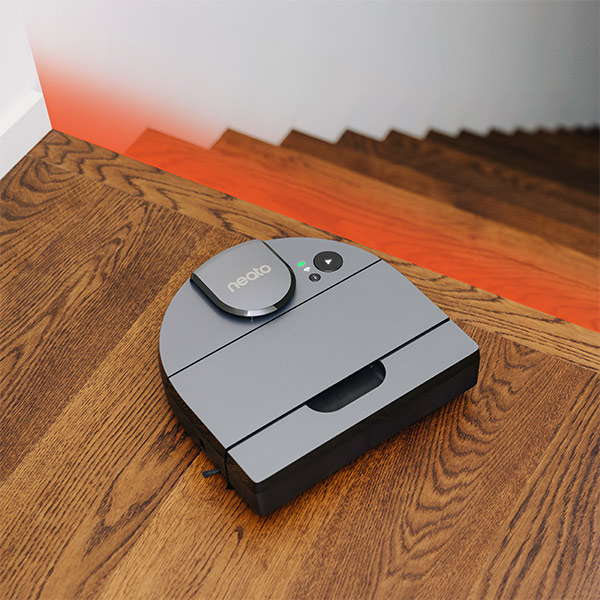
The Neato uses LaserSmart mapping that helps it scan the room with lasers to detect obstacles and avoid them. It also uses lasers to locate dirty areas on your floor and operates well in low-light environments. Plus, it can detect stairs and keep from falling down them.
Like the Neato, Roomba includes sensors that help it detect stairs and avoid them. You can set the Roomba loose in your upstairs rooms without fear of it falling down the stairs. The Roomba also has wall-following technology that allows it to vacuum along the edges of walls and kickboards.
The Roomba’s sensors also detect soft and solid obstacles so that it can respond appropriately. For soft obstacles like curtains and bedsheets, the Roomba will pass them and vacuum under beds and other furniture. In addition to detecting soft obstacles, the Roomba also can recognize objects that it could get tangled on, like cables and carpet fringes.
Boundary Markers
If there are any places you want your vacuum to avoid, don’t worry! Both the Neato and the Roomba come with technology that marks off areas and ensures the robots don’t vacuum those places.
The Neato vacuum comes with magnetic marker strips that will block off areas where you don’t want the vacuum to go, like closets or around a pet’s food and water bowls. Simply place the strips across doorways that you want the Neato to steer clear of.
For boundary detection, some consumers prefer the Roomba’s less visible, more “high-tech” option: the Virtual Wall feature. The Virtual Wall does the same thing as Neato’s magnetic strips, but with an invisible beam. The Roomba also has a Virtual Lighthouse feature that gives it a superior ability to locate its charging station and dock itself.
If you want to mark boundaries for your vacuum without putting down visible magnetic strips, the Roomba Virtual Wall feature is a discreet alternative. This option is more pricey than Neato’s magnetic strips, but if money is no object for you, opt for the Roomba.
Cleaning Pattern
Because of its laser-mapping feature, the Neato can intelligently scan a room and clean it efficiently. It moves in a thorough back-and-forth pattern across your floors. The Roomba takes longer to clean a room because its cleaning pattern is more random. Its dirt-detection technology pinpoints dirtier places to go over, but it takes much longer to clean a room.
The Roomba’s Dirt Detect feature locates dirt and debris and focuses on cleaning those areas. The Persistent Pass feature allows the Roomba to run over a particular spot in a back-and-forth motion until it picks up all the dirt in an area.
If you want a vacuum that gives your floor an even cleaning from wall to wall, you’ll probably want to get a Neato model. The Roomba is best for consumers who want a vacuum that targets messes directly instead of doing a clean sweep.
Winner for Navigation: Roomba
Neato’s back-and-forth cleaning pattern helps it to clean a room quickly and thoroughly, while a Roomba’s route across your floor is a little more chaotic-looking. All the other navigation features work in the Roomba’s favor.
The Roomba shows superior ability to detect obstacles since it can recognize the difference between solid and soft obstacles and identifies cables, cords, and the fringes of rugs as objects to avoid. Also, Roomba’s Virtual Wall method of boundary marking is more sophisticated and aesthetically pleasing than Neato’s magnetic strip boundaries.
Required Maintenance
When you buy a robotic vacuum, you expect it to be able to work independently with very little maintenance from you. Both the Roomba and the Neato are designed to be as low-maintenance as possible.
Brush and Dirt Bin Maintenance
Neato’s straight-edge design allows for a larger brush and dirt bin. The rotating silicone brush doesn’t get as much hair and debris caught in it as the Roomba brush and requires less frequent cleaning. The Roomba’s brush is smaller since it is located between the Roomba’s wheels. Its dirt bin is also smaller than the Neato’s.
Despite having a larger dirt bin, the Neato is more high-maintenance than the Roomba. You still have to empty the dirt bin just as frequently. It’s unclear why this is. Perhaps the Neato fills just as fast because it is more thorough and picks up the debris that a Roomba would have left behind.
Like the Neato, the Roomba needs to be emptied about once per week. This will probably be the only time you’ll need to touch the Roomba since it’s able to find its charging station on its own. It also has rubber rollers that are easier to keep clean and free of debris.
Newer models of the Roomba have an automatic dirt disposal feature, which enables the vacuum to detect when the dirt bin is full and deposit the dirt into a Clean Base before continuing to vacuum. This feature is a pretty major game-changer, although it is the most expensive model of Roomba to date.
Roomba vs. Neato: Pet Hair
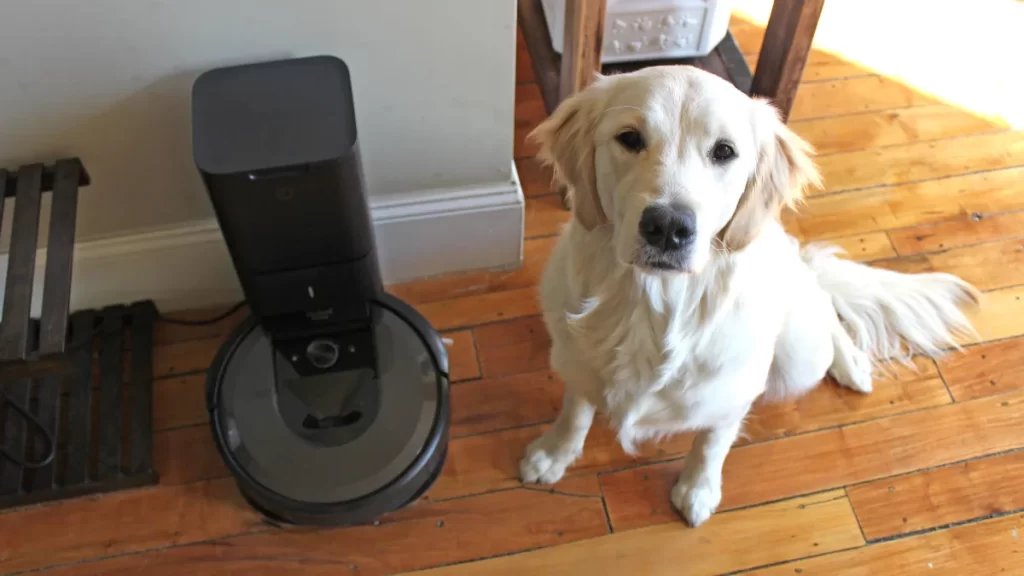
Both the Neato BotVac and the Roomba have difficulty with pet hair and human hair getting caught in their rotating brushes. As far as picking up hair, the Neato does a more thorough job than the Roomba. If you don’t mind cleaning the hair out of the Neato’s rotating brushes from time to time, the Neato is better at picking up all the hair your pets may shed.
Winner for Required Maintenance: Roomba
Unless you decide to splurge for the self-emptying Roomba, both the Roomba and the Neato require you to empty them about once a week. The Neato’s brush requires more frequent cleaning thanks to the quantities of hair and debris it picks up, but this is worth it for homeowners who want a vacuum with superior suction capabilities.
Price
Price is a significant factor when deciding on a new home appliance. Since Roomba has been around for longer and is made from more durable material, the Roomba tends to be more pricey than the Neato. With the Roomba, you pay a bit more. Both vacuums have similar features and capabilities, but Roomba is a bit more high-tech overall and made with more durable materials.
If you are looking for a more budget-friendly robotic vacuum, the Neato is a cheaper model than the Roomba. You pay more for a Roomba and get a machine with lots of the same abilities. If all you want is a robotic vacuum in a cheap price range, go for the Neato Botvac.
Winner for Price: Neato
With a Neato robotic vacuum, you get most of the same features as a Roomba for a lower price. As long as you’re okay with a louder machine that requires more brush maintenance and shorter battery life. If you’re buying on a budget, the Neato is a good deal.
Specific Model Comparisons
As we mentioned before, your choice between Neato and Roomba will depend on what you need from your robotic cleaner. We’ll compare a few specific models to determine which is best for a specific kind of buyer.
Best for Pet Owners: BotVac D80 vs. Roomba 650
If you own pets, you know that shedding is a major concern in your cleaning routine. When picking out a robotic cleaner, you need a machine that can contend with tumbleweeds of animal fur and the pet dander that can lurk beneath the surface.
Neato BotVac D80
The Neato BotVac D80 performs well on both carpets and hardwood floors, with an efficient cleaning pattern that gets to edges and corners. It will auto-return to base when it runs low on battery and resumes cleaning after it finishes charging. The BotVac D80’s 12-inch brush and side brushes work in tandem with the combo brush designed to pick up pet hair.
The Neato BotVac D80 is quieter than earlier models. Since one of the cons about NEato machines was the volume, this is an excellent improvement.
Features:
- Three hour charge time
- Dirt bin capacity of 0.7L
- You can schedule the BotVac D80 to clean daily
- Comes with boundary markers
Cons
- No dirt detection feature
- Doesn’t connect to a mobile device
Roomba 650
The Roomba 650 model is great for homes with pets. It can clean under furniture and works equally well on carpets and hard floors. This model also deals easily with hair, pet fur, and carpet fibers thanks to its 3-Stage Cleaning System. The 3-Stage Cleaning System agitates, brushes, and then suctions floors for a more thorough cleaning.
Features:
- Three hour charge time
- Easy start with a single button, or you can schedule up to a week of cleaning
- Dirt bin capacity 0.4L
- Comes with one Virtual Wall
- Automatic dock and recharge feature
Cons
- No Dirt Detect sensor
- No indicator when the dirt bin is full
Key Differences Between BotVac D80 and Roomba 650
- Dirt bin capacity: The Roomba 650 has only a 0.4L dirt bin capacity, while the BotVac D80 can hold 0.7L in its dirt bin
- Both come with boundary markers, but the Roomba includes the more sophisticated Virtual Wall feature
- BotVac D80 has a larger brush
- Both machines have the automatic dock and charge feature, but only the BotVac D80 resumes cleaning after charging is complete.
Which Is Better?
We recommend the Neato BotVac D80 for pet owners. Unlike the Roomba 650, the BotVac D80’s shape can reach into corners and close up to walls, where those pesky furballs like to gather. The larger brush and greater dirt bin capacity are also ideal for collecting the pet fur around your house. The D80 will also continue cleaning after it charges.
Best High-Range Vacuum: Neato BotVac Connected D7 vs. Roomba 980
You’ve moved up in the world, and you’re ready to splurge on a truly superior robotic cleaner for your home. Let’s see how the BotVac D7 and the Roomba 980 stand up against each other.
Neato BotVac Connected D7
The Neato BotVac Connected D7 is packed with features that make it easy and convenient to use. You can even control it from your smartphone.
The BotVac D7 uses laser navigation to map your home. It cleans in an orderly back-and-forth pattern to cover every inch of the floor, and its D-shaped design can reach corners where dirt and dust tend to accumulate.
Thanks to its wi-fi connectivity, the BotVac D7 can connect to smart home systems like Alexa, Google Home, and Echo. Through the app, you can program the cleaner’s FloorPlanner, No-Go Lines, and cleaning schedules. This savvy little machine also has a Zone Cleaning for areas in your home that require additional attention.
Features
- Dustbin capacity of 0.7L
- 150 minutes of battery life on a single charge
- Auto returns to the base for charging then resumes cleaning
Cons
- May need to be rebooted frequently
Roomba 980
The Roomba 980 boasts a higher cleaning power than older Roomba models thanks to its Power Lifting Suction. When this robotic cleaner senses that it is vacuuming carpet, it automatically switches to Power Boost for increased cleaning. The Roomba 980 has a Premium 3-Stage Cleaning System – perfect for homes with pets – that cleans the dust, animal hair, and dirt you can’t see.
The Roomba 980 maps its surroundings with vSLAM technology and can maneuver beneath furniture and around objects. It senses when it needs a recharge and automatically docks itself. After completing the recharge, the Roomba 980 continues cleaning.
Features
- Has Dirt Detect feature
- Control it from your mobile device
- Wi-fi enabled
- Power Boost cleaning for carpets
Cons
- If you don’t have a smartphone, you won’t be able to access some settings
Key Differences Between Neato BotVac Connected D7 and Roomba 980
- Neato BotVac D7 has a bigger brush and dirt bin than the Roomba 980.
- Roomba 980 has the Dirt Detect feature, which BotVac D7 doesn’t have.
- BotVac D7 is better at working in low light, thanks to its mapping feature that uses lasers. The Roomba 980 maps using a camera, which isn’t as effective in low light.
Which Is Better?
These two vacuums are on the high-performance end of the spectrum when it comes to robotic cleaners. Both have similar features for navigation and powerful cleaning. With the Neato BotVac D7, you get most of the same features as the Roomba 980 for a lower price. For that reason, we recommend the Neato model again.
Neato vs. Roomba: The Winner
Our pick for the overall best robotic cleaner is the Neato, thanks to its budget-friendly price, superior suction capabilities, and its thorough cleaning pattern that cuts no corners (literally) with its straight-edged design. The Roomba may be a more recognizable name, but for a consumer who wants a simple and effective robotic cleaner, the Neato ends up on top.
With that being said, we know that not everyone is looking for the same features in a robotic vacuum cleaner. Neato’s BotVac was our pick overall, but if the Roomba’s stronger features are more important to you, don’t let us stop you from buying the vacuum that meets your personal requirements.
What Next?
If you’re ready to take your cleaning game to the next level, a robotic vacuum should be first on your list. Both the Neato and the Roomba are low-maintenance, high-performance robotic cleaners that can save you time and hassle in your daily routine.
The Roomba has some pretty cool obstacle detection abilities and longer battery life than the Neato, but you can’t beat the Neato for complete floor coverage and maximum cleaning power. Its D-shaped design and greater suction power allow the Neato to pick up hair, dirt, and debris from every nook and cranny of your floor, even the corners.
You can find a Neato BotVac at pretty much any store that sells appliances for the home, such as Walmart, Best Buy, and Bed Bath and Beyond. If none of these options are available to you, or if you prefer to order your robotic cleaner online, you can find a variety of BotVac models.
With a robotic cleaner in your house, you’ll never use a traditional vacuum cleaner again. A small investment makes keeping your floors clean effortless. Relax, put your feet up, and let a robotic cleaner do the work.

